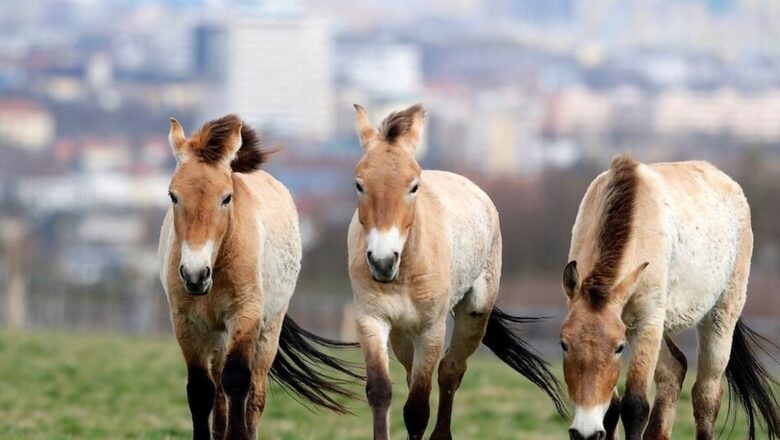
views
In the expansive Virginia Range, spanning 40 miles from Carson City to Reno in the easternmost part of the northern Sierra Nevada Mountains, a growing concern emerges as over 3,500 wild horses roam freely, creating hazards for Nevada drivers. Originating in the 1980s and 1990s, these horses, once owned or escaped from ranchers, now face a complicated situation under Nevada law. Designated as state property, any attempt by residents to manage the burgeoning population is deemed illegal, leaving the community grappling with the consequences. Despite being above its sustainable capacity of 500 to 600 horses, the Virginia Range endures strain on its ecosystem, amplifying the risk to drivers in the region.
Vehicle collisions with horses increased from 46 in 2020 to 42 in late November 2023, according to the Nevada Department of Agriculture. The Bureau of Land Management (BLM) oversees nearly 45,000 wild horses in Nevada, estimating at least 400 collisions between 2006 and 2018. This rising interaction between cars and horses poses significant challenges, reports The New York Post.
Moreover, the wild horses pose threats to people who venture too close. Documented incidents include children being kicked by horses, emphasising the unpredictable nature of these animals. With a potential annual growth rate of approximately 25%, the wild horse population further compounds the issue.
Addressing this ballooning population, the Nevada Agriculture Department collaborated with the American Wild Horse Campaign. Their joint efforts involved administering fertility control treatments to around 80% of the horse population, resulting in a noteworthy 66% decrease in the birth rate over the past four years. However, such measures have not been without controversy, as BLM-led roundups led to horse fatalities, sparking public outcry, reports The New York Post.
In response to these challenges, plans for a new program to oversee the horse population are on the horizon, according to J.J. Goicoechea, the director of the Nevada Department of Agriculture.
Meanwhile, in Arizona, the BLM is taking steps to manage wild donkeys, recognizing their rapid population increase. Up to 1,000 wild donkeys from the Black Mountain Herd Management Area are slated for removal, with relocation to wild horse and burro facilities in California, where they will be made available for adoption or sale. The struggle to strike a balance between the safety of residents, drivers, and the well-being of these wild animals continues in the face of legal complexities and practical challenges.




















Comments
0 comment